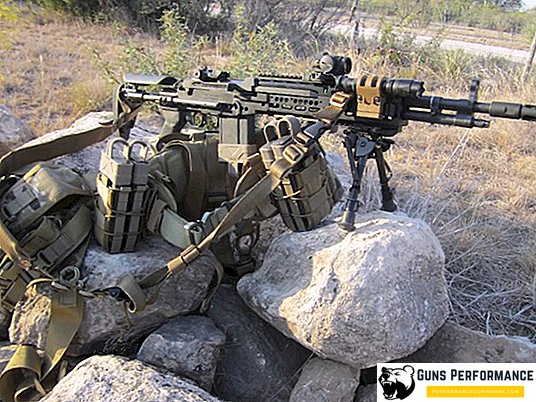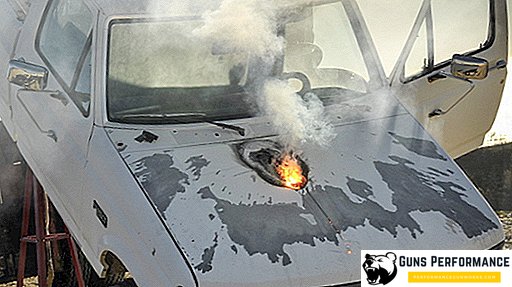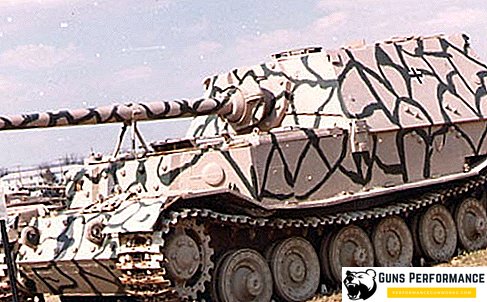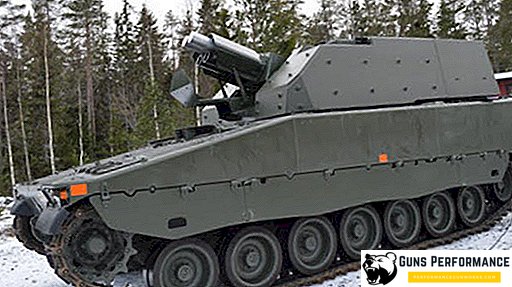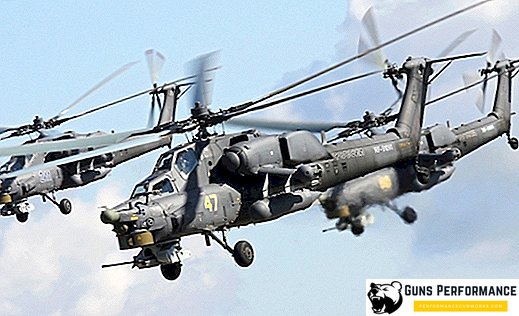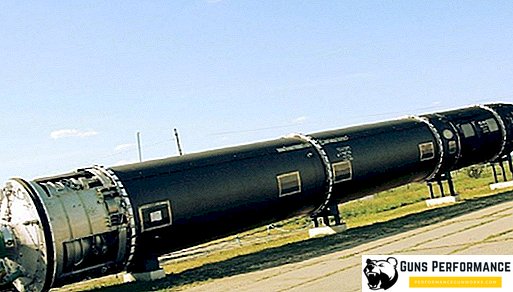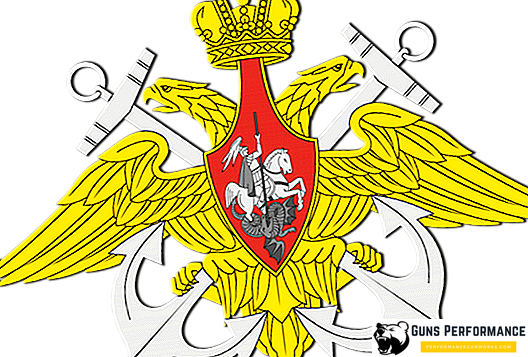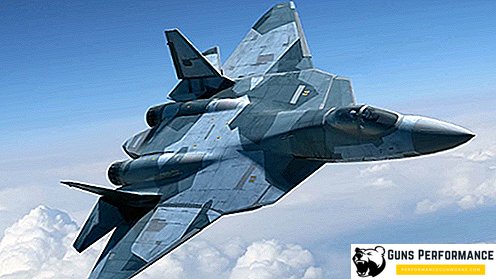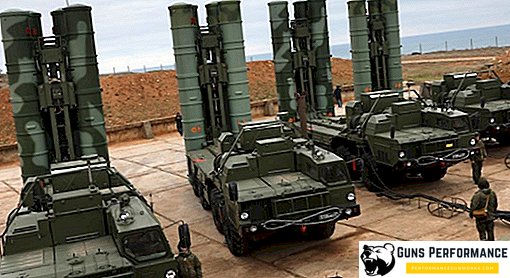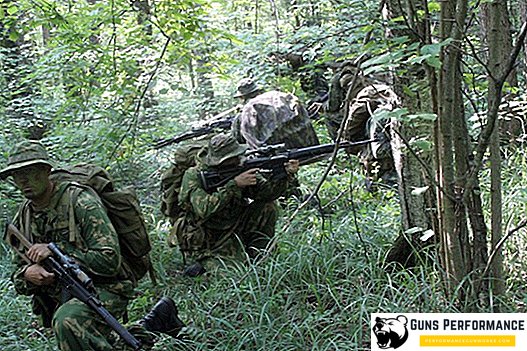
Thanks to cinema and television, most Russians are aware of the existence of special forces units that are subordinate to the Main Intelligence Directorate of the General Staff of the Armed Forces of the Russian Federation (GRU special forces). However, these special units are far from being the only ones in the Russian armed forces, their “colleagues” are less well-known and not so “divided”. At the same time, with their professionalism and combat experience they are hardly inferior to the famous GRU special forces. First of all, we are talking about special units of the Russian Airborne Forces or special forces of the Airborne Forces.
Special units of the Airborne Forces appeared a long time ago, during the Great Patriotic War. In February 1994, on the basis of two separate special purpose battalions, a regiment of special forces of the Airborne Forces was formed. Closer to our time, this unit took an active part in both campaigns in the North Caucasus, and later was involved in the war with Georgia in 2008. His place of permanent deployment is Moscow Region Kubinka. At the end of 2014, the airborne regiment was deployed to the brigade.
Despite the fact that the tasks performed by the GRU special forces and the special forces of the Airborne Forces are similar in many respects, there are still differences between these units. However, before we talk about the special forces of the Airborne Forces, we should say a few words about the history of the special forces in general.
History of special forces
Parts for special operations were created in the USSR almost immediately after the Bolsheviks came to power. The units were engaged in reconnaissance and subversive work in unfriendly territory. In neighboring countries, pro-Soviet partisan detachments were created, whose work was supervised by military intelligence from Moscow. In 1921, a special department was created in the Red Army, which was engaged in collecting intelligence information for the leadership of the Red Army.
Having survived several reorganizations, the intelligence agency of the Red Army in 1940 was finally transferred to the subordination of the General Staff. Spetsnaz GRU was established in 1950.
Special units of the Airborne Forces appeared in the 30s, immediately after the appearance of this kind of troops in the USSR. The first part of the Airborne Forces was formed in 1930 near Voronezh. Almost immediately there was an obvious need to create their own intelligence Airborne.
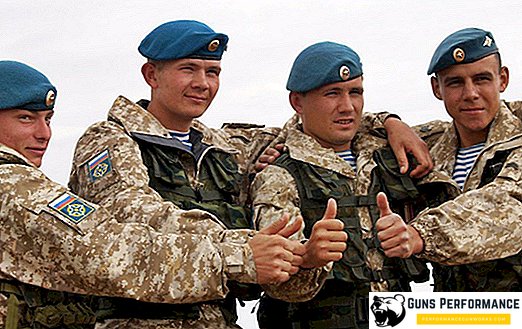
The fact is that the Airborne Forces are designed to perform specific functions - operations in the enemy's rear, destruction of especially important objects of the enemy, disruption of his communications, seizure of bridgeheads and other operations of a predominantly offensive nature.
For a successful landing operation, preliminary reconnaissance of the landing site is necessary. Otherwise, operations are threatened with failure - this has happened many times during the Great Patriotic War, when ill-prepared landing operations cost the lives of thousands of paratroopers.
In 1994, on the basis of two separate special purpose battalions of the Airborne Forces, the 901st and 218th, the 45th separate regiment of the special forces of the Airborne Forces was formed. A few words should be said about the units that are part of the regiment.
The 218th battalion was formed in 1992, and before joining the regiment of the special forces of the Airborne Forces he managed to participate in several peacekeeping missions: in Abkhazia, Ossetia and Transnistria.
The history of the 901st battalion is much longer and richer. It was formed in 1979 in the Transcaucasian Military District as a separate assault landing battalion, then transferred to Europe, to the place of the intended theater of hostilities. In the late 1980s, the Baltic States became the location of the unit. In 1992, the 901st battalion was renamed to a separate parachute and transferred to the command of the Airborne Forces.
In 1993, during the Georgian-Abkhaz conflict, the 901st battalion was in the territory of Abkhazia, after which it was transferred to the Moscow region. In 1994, the unit became a separate special forces battalion and became part of the 45th Special Forces Regiment.
The regiment's servicemen took part in both Chechen campaigns, in an operation to force Georgia to peace in 2008. In 2005, the 45th Special Forces Regiment received the honorary title "Guards", the unit was awarded the Order of Alexander Nevsky. In 2009 he was awarded the St. George banner.
In 2014, a brigade of special forces of the Airborne Forces was formed on the basis of the 45th separate regiment.
In various conflicts, killing more than 40 troops from the unit. Many soldiers and officers of the regiment were awarded orders and medals.
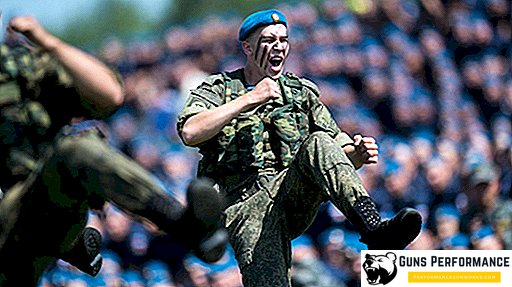
What is the special forces Airborne
The functions of the airborne special forces are very similar to those performed by their colleagues from the divisions of the Main Intelligence Directorate. However, there are still differences. And they are associated with specific tasks that the Airborne Forces should solve.
Of course, the special forces of the Airborne Forces can conduct sabotage and reconnaissance operations behind enemy lines, but first of all it must prepare the possibility of landing for the main airborne units. The concept of "prepare" in this case is interpreted very broadly. First of all, we are talking about the reconnaissance of the landing area: the leadership must have the maximum information about where the paratroopers will land and what awaits them there.
In addition, the scouts, if necessary, prepare the site for landing. This may be the capture of the enemy’s airfield or a small bridgehead. If necessary, sabotage is carried out in the region, infrastructure objects are destroyed, communication is disturbed, chaos and panic are created. SWAT can also conduct operations to capture and short-term retention of important objects in the rear of the enemy. Most often, such work is carried out in the course of offensive actions.
It should be noted another difference between the special forces of the GRU and the Airborne Forces. Subunits of the Main Intelligence Directorate can operate anywhere in the world (it’s not for nothing that they have a globe on their emblem). Special Forces Airborne usually operates closer, within the flight range of the transport aircraft of the Airborne Forces, usually not more than two thousand kilometers.

Special Forces Airborne is considered to be the elite of the Russian army. Therefore, the requirements for training and equipping fighters are very strict. Not everyone is able to qualify and become a fighter in this unit. The fighter of the special forces of the Airborne Forces should be distinguished by its resistance to stress, endurance, and should possess all types of weapons. Special Forces have to act in the rear of the enemy, having no support "from the mainland", carrying on themselves tens of kilograms of weapons, ammunition and equipment.
The fighters of the unit are equipped with the best types of weapons, ammunition, equipment of Russian and foreign production. Money for special forces do not regret. It should be noted that any special forces (Russian or American) is a very expensive "pleasure." Sniper rifle "Vintorez", Kalashnikov assault rifles of the 100th series, large-caliber rifles of domestic production - this is not a complete list of small arms, which are used by scouts.
The fighters of the 45th separate brigade are actively using unmanned aerial vehicles for reconnaissance; there is a unit in the brigade that is engaged in psychological warfare and demoralization of the enemy.
The Russian special forces of the Airborne Forces are rightfully considered one of the best special units in the world.
In 2012, a platoon of the 45th regiment of special forces of the Airborne Forces participated in joint exercises with the American "green berets", which were held in Fort Carson.


